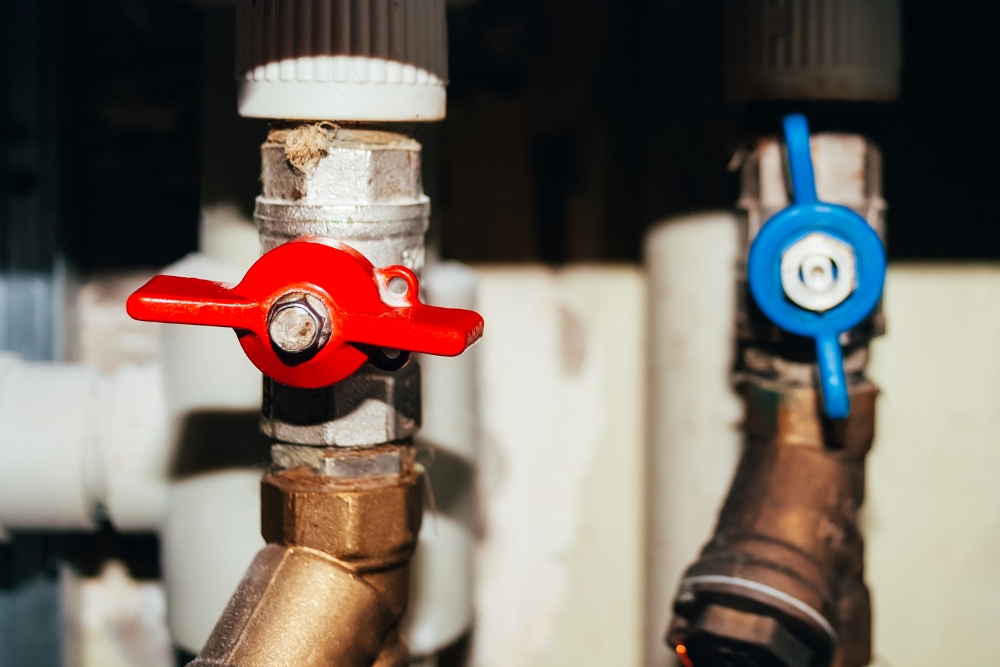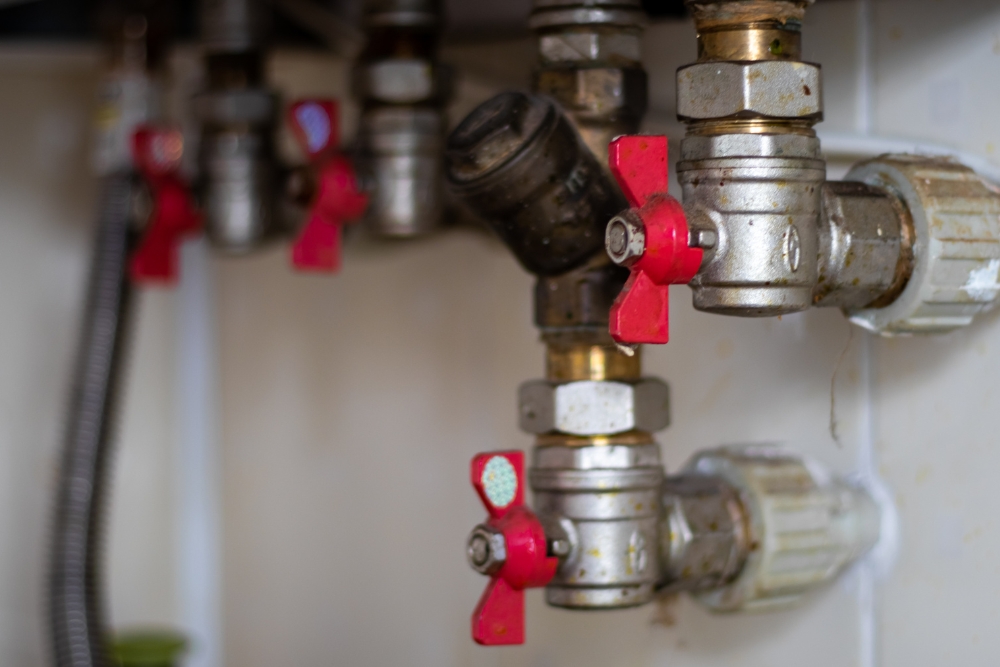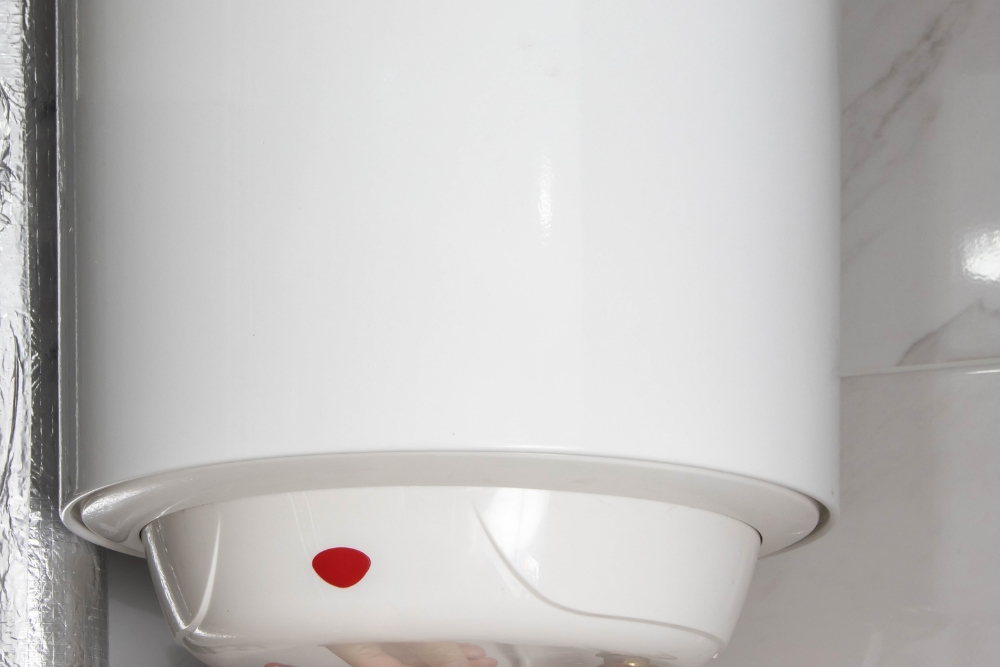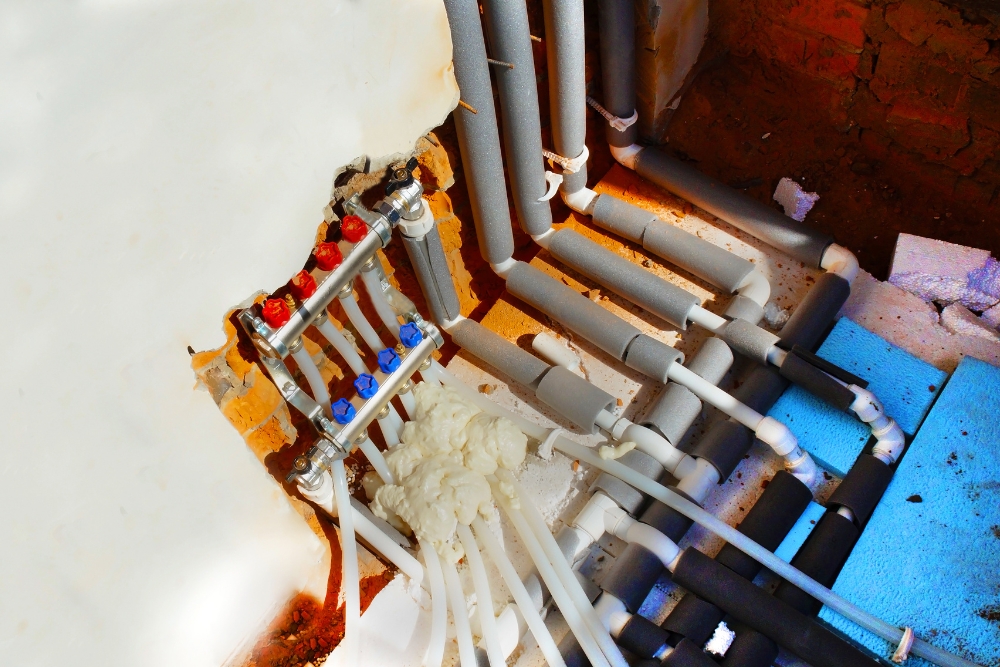Struggling with your hot water playing up and not making its way around the house right? You’re definitely not on your own. We’ve dived deep into the nitty-gritty, doing our homework to suss out what’s going amiss and how to get it sorted.
Key Takeaways
- To troubleshoot hot water service circulation problems, always start by checking the recirculation pump and visually inspecting it for any signs of damage or blockages that might be affecting its performance.
- Regularly flushing your hot water system is a great way to clear out sediment build-up, ensuring consistent water flow and temperature throughout your home. Remember to turn off the power and drain the tank carefully during this process.
- Insulating your hot water pipes is an effective preventive measure that can reduce heat loss by up to 80%, saving you money on energy bills and keeping your water hotter for longer.
- Setting timers for recirculation aligns with peak usage times, minimising energy waste while guaranteeing hot water availability when you need it most, making it a smart strategy for managing your system’s efficiency.
- Proper sizing of the recirculation pump is critical; too small or too large can lead to inefficiencies like increased energy costs or inadequate hot water circulation. Consulting with a professional can ensure you have the right size for your home’s needs.
Understanding Hot Water Service Recirculation Systems
Hot water recirculation systems work by constantly circulating hot water through the pipes, ensuring instant hot water at the taps. Common problems include issues with the circulation pump, valve malfunctions, and sediment buildup affecting system performance.
How they work
Hot water recirculation systems solve the problem of having to wait for hot water by keeping it flowing within the pipes so it’s available on demand. This method uses either a dedicated line that loops throughout the home back to the heater or uses the existing cold-water pipes to circulate hot water.

Pumps installed in these systems push hot water through the pipes and back to the heater for reheating, ensuring energy efficiency and instant access.
We often find these pumps controlled by timers and thermostats, allowing them to operate only when needed, reducing energy waste. In larger homes or buildings managed by a Building Management System (BMS), such setups optimise hot water circulation without sacrificing comfort or hiking up power bills.
Regular maintenance of these circulating pumps helps avoid common issues like blockages or malfunctioning valves which disrupt service, making troubleshooting an essential skill for homeowners keen on smooth operation.
Common problems
Common problems with hot water circulation systems often include issues such as insufficient water temperature, noisy operation, and inconsistent water flow. These problems can stem from malfunctioning valves, a failing recirculation pump, or sediment buildup within the system.
In some cases, outdated or faulty components may also contribute to these common issues. Identifying and addressing these problems promptly can help prevent more serious issues in the future and ensure a consistent supply of hot water throughout your home.
Regular maintenance and troubleshooting techniques can help homeowners address these common hot water system problems effectively.
Troubleshooting Hot Water Circulation Problems
When troubleshooting hot water circulation problems, we check the recirculation pump and inspect valves and components. Flushing the system can also help resolve issues with water flow and temperature consistency.
Checking the recirculation pump
To check the recirculation pump, first turn off the power to the pump at the breaker panel or disconnect its power supply. Then, remove the cover of the pump and visually inspect it for any signs of damage such as corrosion, leaks, or worn-out parts. Next, check the impeller inside the pump for any debris or blockages that may be affecting its performance. After that, use a multimeter to test the electrical connections and verify that the pump is receiving power as per the manufacturer’s guidelines. Lastly, if you notice any issues during these checks, it may be necessary to consult with a professional plumber or technician for further assistance.
- Inspect valves and components
When inspecting valves and components in your hot water circulation system, start by identifying all valves and components within the system. Then, perform a visual inspection of each valve and component for any visible signs of leaks, corrosion, or wear and tear. After that, test each valve to ensure they open and close properly without any resistance. Additionally, check for any loose fittings or connections that may be causing issues with water flow in the system. Finally, if you notice any problems with the valves or components during the inspection, consider seeking professional help to address these issues effectively.
- Flush the system
To flush your hot water circulation system, begin by turning off both the power supply to your water heater as well as shutting off the water supply to your home. Then open all hot water faucets throughout your home and let them run until there’s no more hot water coming out. Once this is done, locate the drain valve on your water heater or circulation line and attach a garden hose to it. Open this drain valve carefully while ensuring that there are no leaks; allow all remaining hot water to drain from your tank through this hose into a suitable drainage point outdoors. Remember not to pour hot water down sink drains as it can cause damage over time due to excessive heat; allow enough time for your tank to empty fully before closing off all faucets and turning back on both power and water supplies.
Inspecting valves and components
When inspecting valves and components of your hot water recirculation system, check for any signs of leaks or corrosion. Be on the lookout for loose fittings or damaged parts that may affect the proper functioning of the system.
- Inspect all valves for signs of wear, rust, or leaks. Ensure that they are fully operational and properly sealed to prevent any hot water from escaping and causing a decrease in pressure.
- Check the temperature and pressure relief valve for any signs of leakage or malfunction. This valve is crucial for maintaining safe pressure levels within the hot water system.
- Examine the circulation pump to ensure it is free from debris and operates smoothly without any unusual noises. Proper functioning of the circulation pump is essential for maintaining consistent water flow throughout the system.
- Inspect all connections and joints in the piping system to identify any potential sources of leaks or blockages that could impact hot water circulation.
- Look for any signs of sediment build-up within the pipes or components, as this can impede water flow and lead to temperature inconsistencies in your hot water supply.
Inspecting valves and components is an integral part of troubleshooting hot water circulation problems, ensuring efficient operation and preventing potential issues down the line.
Next, let’s delve into simple fixes for common hot water circulation system malfunctions.
Flushing the system
To ensure the efficient operation of your hot water circulation system, it’s important to regularly flush the system. Here are the steps to follow:
- Turn off the power supply or gas to the water heater before starting the flushing process.
- Locate the drain valve at the bottom of the water heater and connect a garden hose to it for drainage.
- Open a hot water faucet in your home to allow air into the system and assist with draining.
- Carefully open the drain valve and let the water flow out until it runs clear, indicating that sediment or debris has been flushed out.
- Close the drain valve once all sediment and debris have been removed.
- Turn on the cold water supply to refill the tank and allow any remaining air to escape from the open faucet.
Regularly performing this maintenance task will help prevent sediment build-up and ensure consistent hot water flow throughout your home.

Simple Fixes for Common Hot Water Circulation System Malfunctions
To address insufficient temperature in hot water circulation, adjust the thermostat settings on the water heater. If noisy operation is an issue, consider bleeding excess air from the system or tightening any loose components.
Insufficient temperature
If your hot water system is producing water that is not reaching the desired temperature, sediment build-up in the tank or faulty heating elements could be the culprits. Sediment can insulate against heat transfer and cause inefficiency in heating.
Additionally, damaged or worn-out heating elements may struggle to maintain consistent temperatures. Checking on these components regularly can help ensure your hot water system operates at its best.
A malfunctioning thermostat may also contribute to insufficient water temperature. Monitoring and adjusting the thermostat as needed can assist in resolving this issue. Furthermore, ensuring proper insulation of hot water pipes and regular maintenance checks on valves and pressure regulators can help maintain optimal operating temperatures for your hot water service.
Noisy operation
If you’ve already addressed the issue of insufficient temperature, another common problem to watch out for is noisy operation. A loud or unusual sound coming from your hot water circulation system could indicate a malfunctioning recirculation pump, loose components, or air trapped in the pipes.
This can disrupt the smooth flow of hot water and may lead to potential damage within the system. Regularly checking and maintaining your hot water circulation system can help prevent noisy operation and ensure that it runs smoothly.
Inconsistent water flow
If your hot water system experiences inconsistent water flow, it could be due to a variety of issues. Sediment build-up in the pipes or the water heater can affect the flow of hot water, leading to uneven distribution and reduced pressure at faucets and fixtures.
Malfunctioning recirculation pumps or valves may also disrupt the smooth circulation of hot water throughout your home. These issues need prompt attention to ensure that you have consistent access to hot water whenever needed.
Regular maintenance, such as flushing out sediment from the system and checking for valve or pump malfunctions, can help prevent inconsistent water flow in your hot water service. Additionally, ensuring proper insulation of hot water pipes and setting timers for recirculation can contribute to a more even distribution of hot water.
By addressing these concerns proactively, you can maintain an efficient and reliable hot water circulation system in your home.
Preventive Measures for Hot Water Recirculation Systems
Insulate hot water pipes properly to retain heat and prevent energy loss. Learn more about effective preventive measures for maintaining your hot water recirculation system by reading on.
Proper insulation of hot water pipes
Insulating hot water pipes helps in maintaining higher water temperatures, reducing heat loss and energy consumption. It also prevents freezing during colder months, ensuring consistent hot water flow.

Proper insulation of hot water pipes is crucial to avoid temperature fluctuations and potential damage from extreme weather conditions.
Effective pipe insulation can prevent heat loss by up to 80%, saving you money on your energy bills. This simple preventative measure helps maintain the efficiency of your hot water system while extending its lifespan.
Setting timers for recirculation
We can improve hot water circulation by setting timers for recirculation. Timers allow the system to operate during peak usage times and minimise energy consumption during off-peak hours, ensuring a steady supply of hot water when needed most.
By syncing the recirculation schedule with periods of high demand, we can efficiently maintain comfortable water temperatures without constantly running the pump.
If you’re experiencing issues with inconsistent hot water availability throughout the day, setting timers for recirculation could help regulate the flow and ensure a reliable supply of heated water whenever it’s required.
Pump sizing
When setting up a hot water recirculation system, it’s crucial to consider pump sizing. The right-sized pump ensures efficient water flow through the system, preventing issues such as inconsistent water temperature and slow circulation.
Proper pump sizing is essential for maintaining adequate pressure and optimising energy consumption in your hot water recirculation system.
Factors like pipe diameter, total length of piping, and the number of bends and fittings all influence the appropriate size of the pump for your hot water recirculation system. The wrong pump size can lead to increased energy costs or insufficient hot water circulation.
Fast and Effective Hot Water Repairs in Your Area!
Addressing hot water circulation problems is crucial for maintaining a reliable and efficient hot water system. Checking the recirculation pump, inspecting valves and components, and flushing the system are effective troubleshooting techniques.
Simple fixes like adjusting pump sizing and setting timers for recirculation can help prevent future issues. Taking preventive measures such as proper insulation of hot water pipes can also contribute to maintaining a well-functioning hot water circulation system.
Are you tired of waiting for hot water? Let us tackle your circulation problems today! Contact us for swift solutions and enjoy instant hot water throughout your home.






